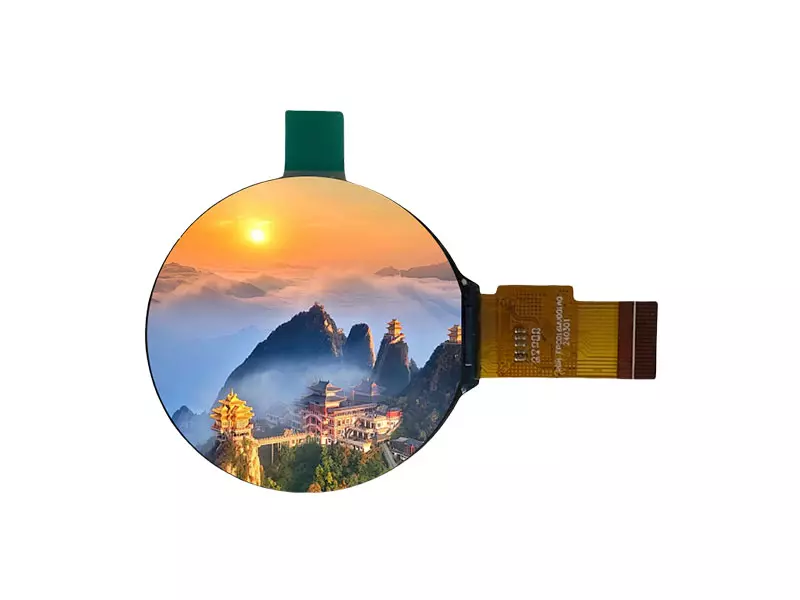Understanding TFT LCD with LVDS Interface: A Comprehensive Guide for Professionals
Jun 03,2025
Thin-Film Transistor Liquid Crystal Display (TFT LCD) technology has become a cornerstone in various electronic devices, particularly in the LED display sector. The integration of the Low-Voltage Differential Signaling (LVDS) interface enhances the performance and reliability of these displays. This article aims to elucidate the importance of TFT LCD with LVDS interface, especially for professiona
Thin-Film Transistor Liquid Crystal Display (TFT LCD) technology has become a cornerstone in various electronic devices, particularly in the LED display sector. The integration of the Low-Voltage Differential Signaling (LVDS) interface enhances the performance and reliability of these displays. This article aims to elucidate the importance of TFT LCD with LVDS interface, especially for professionals in the electric and LED display industry.
TFT LCD is known for its ability to produce high-quality images with vibrant colors and sharp contrasts. This is achieved through the use of thin-film transistors that control individual pixels, resulting in improved response times and greater viewing angles. The addition of the LVDS interface further optimizes these displays by providing a high-speed and low-power means of transferring data. LVDS reduces electromagnetic interference, making it an ideal choice for high-resolution displays, where clarity and precision are paramount.
One of the significant advantages of using TFT LCD with LVDS is its capability for high bandwidth. This feature is crucial for applications that require the transmission of large amounts of video data, such as in gaming, professional graphics, and high-definition displays. Moreover, the LVDS interface supports longer cable lengths without significant loss of signal integrity, making it suitable for various installation environments, from compact devices to larger display setups.
In the context of the LED display industry, the combination of TFT LCD technology with the LVDS interface allows for flexible and scalable display solutions. These displays can be configured for a range of applications, including digital signage, industrial monitors, and consumer electronics. This versatility is essential for professionals who need to adapt to different market demands while ensuring top-notch display performance.
Another noteworthy aspect is energy efficiency. TFT LCDs with LVDS interfaces typically consume less power compared to traditional display technologies. This feature not only contributes to reduced operational costs but also aligns with global initiatives aimed at promoting sustainability in electronic manufacturing. As energy efficiency becomes an increasingly important consideration, the adoption of such technologies is likely to rise.
In conclusion, understanding the functionalities and advantages of TFT LCD with LVDS interface is vital for professionals operating within the electric and LED display industry. As technology continues to evolve, leveraging these advancements will enable businesses to enhance their product offerings, ensuring that they meet modern consumer expectations for quality, performance, and energy efficiency. With this knowledge, industry experts can make informed decisions that promote innovation and growth in their respective fields.
TFT LCD is known for its ability to produce high-quality images with vibrant colors and sharp contrasts. This is achieved through the use of thin-film transistors that control individual pixels, resulting in improved response times and greater viewing angles. The addition of the LVDS interface further optimizes these displays by providing a high-speed and low-power means of transferring data. LVDS reduces electromagnetic interference, making it an ideal choice for high-resolution displays, where clarity and precision are paramount.
One of the significant advantages of using TFT LCD with LVDS is its capability for high bandwidth. This feature is crucial for applications that require the transmission of large amounts of video data, such as in gaming, professional graphics, and high-definition displays. Moreover, the LVDS interface supports longer cable lengths without significant loss of signal integrity, making it suitable for various installation environments, from compact devices to larger display setups.
In the context of the LED display industry, the combination of TFT LCD technology with the LVDS interface allows for flexible and scalable display solutions. These displays can be configured for a range of applications, including digital signage, industrial monitors, and consumer electronics. This versatility is essential for professionals who need to adapt to different market demands while ensuring top-notch display performance.
Another noteworthy aspect is energy efficiency. TFT LCDs with LVDS interfaces typically consume less power compared to traditional display technologies. This feature not only contributes to reduced operational costs but also aligns with global initiatives aimed at promoting sustainability in electronic manufacturing. As energy efficiency becomes an increasingly important consideration, the adoption of such technologies is likely to rise.
In conclusion, understanding the functionalities and advantages of TFT LCD with LVDS interface is vital for professionals operating within the electric and LED display industry. As technology continues to evolve, leveraging these advancements will enable businesses to enhance their product offerings, ensuring that they meet modern consumer expectations for quality, performance, and energy efficiency. With this knowledge, industry experts can make informed decisions that promote innovation and growth in their respective fields.
Key words:
Recommended
Top Factors Influencing the Choice of the Best Automotive Grade TFT Display
Top Factors Influencing the Choice of the Best Automotive Grade TFT Display
Table of Contents
Introduction to Automotive Grade TFT Displays
1. Durability: The Backbone of TFT Displays
2. Performance Metrics for Automotive Displays
3. Cutting-Edge Technology in TFT Displays
4. Enhancing User Experience with TFT Displays
5. Size and Design Considerations
6. Cost vs. Qual





